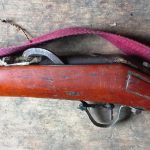The cutting- and chopping tools used by forest dwellers include adzes, axes, machetes, and a specialized knife. All of these tools have a strong historical background and are still in use today.
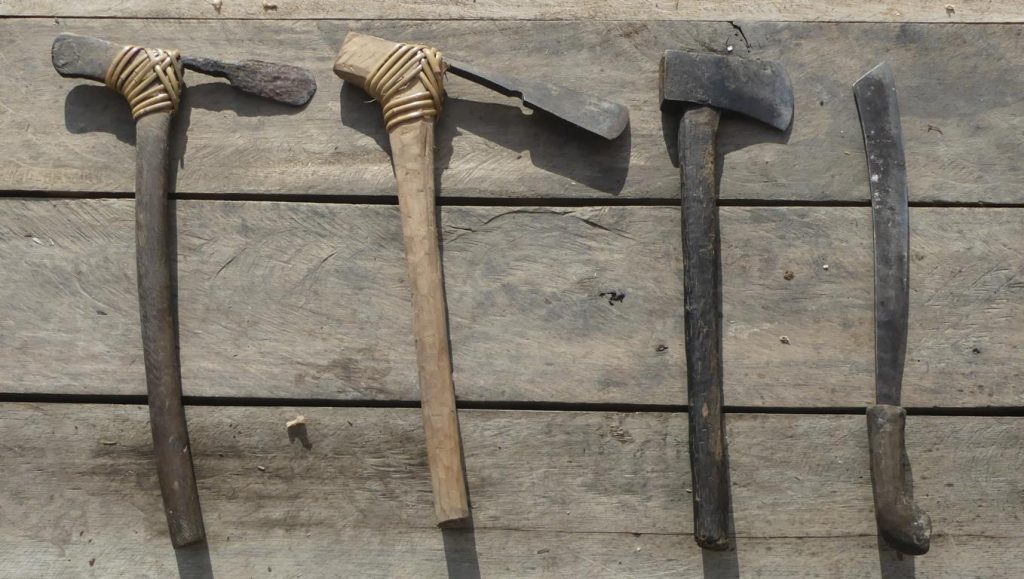
Axes
People primarily use axes (Oggut) to fell sago and other palms. The handle of the observed axe was carved from Arenga pinnata wood. It was so old that nobody at the Uma could recall when the steelhead was purchased or how long the handle had lasted.
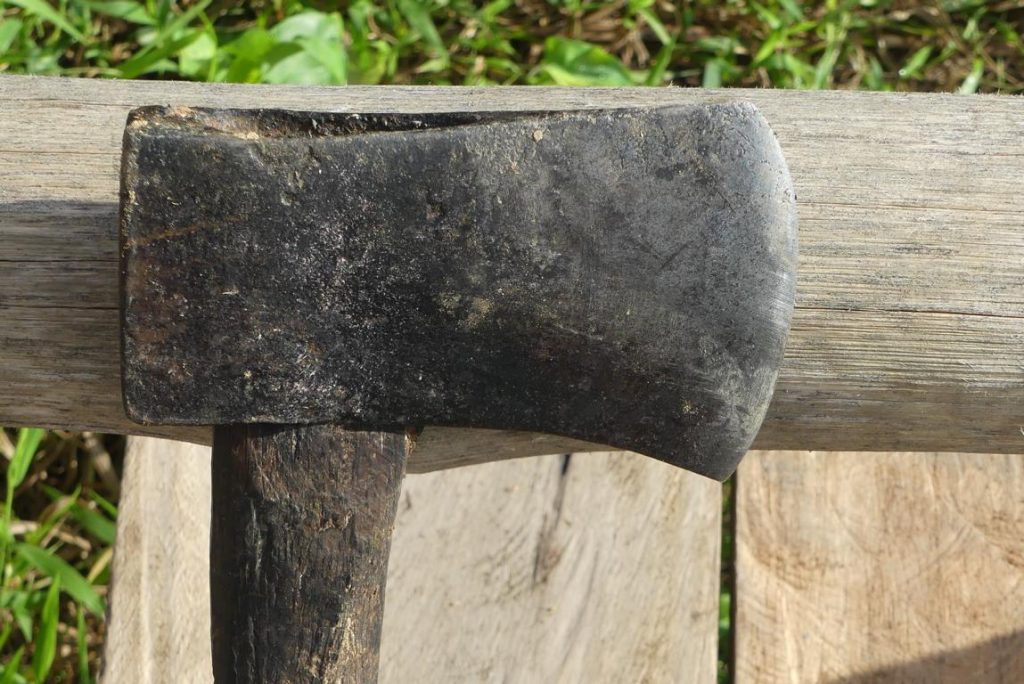
Combined Adze and Axe
The cutting edge of an axe is parallel to the handle, whereas the cutting edge of an adze is perpendicular to the handle. Moreover, this combined adze and axe is the most crucial cutting and chopping tool (Baliok). The blades of traditional adzes in Southeast Asia and the Pacific Islands can be removed and easily fitted to the handle at every angle.
Therefore, adzes are also used at angles that suit the bearer for chopping in specific situations. The traditional definition described above is therefore not always correct.
The blade of this modern adze and axe was bought from a dealer in Muara Siberut village. The handle was crudely carved from an unidentified light wood, straight and shaped like an adze.
Rattan binding was identical to that on the next-described adze. It was the same rattan species (Calamus javensis) used for sewing palm-leaf panels and for making snares to catch chickens.
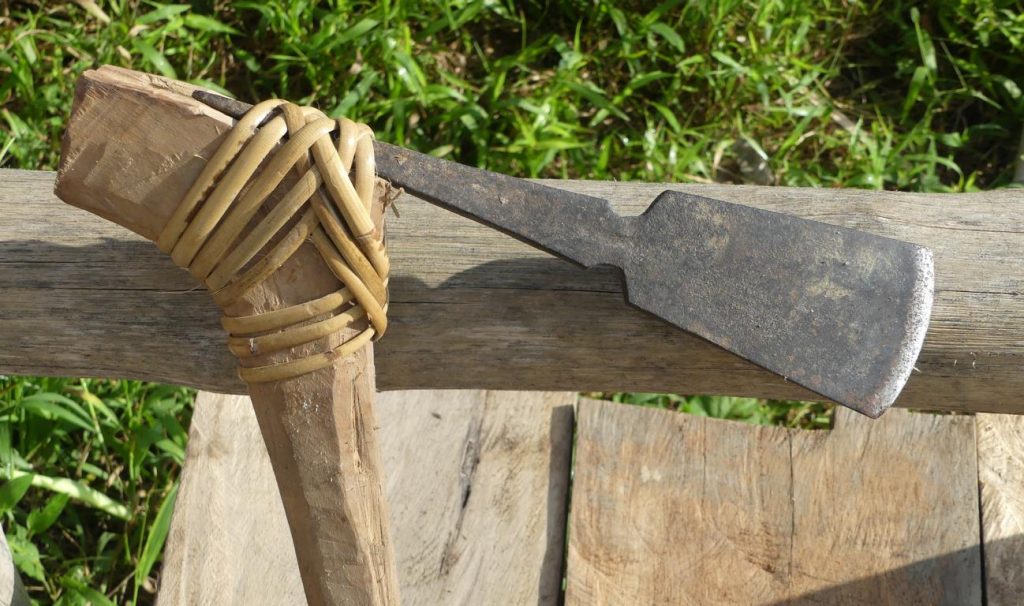
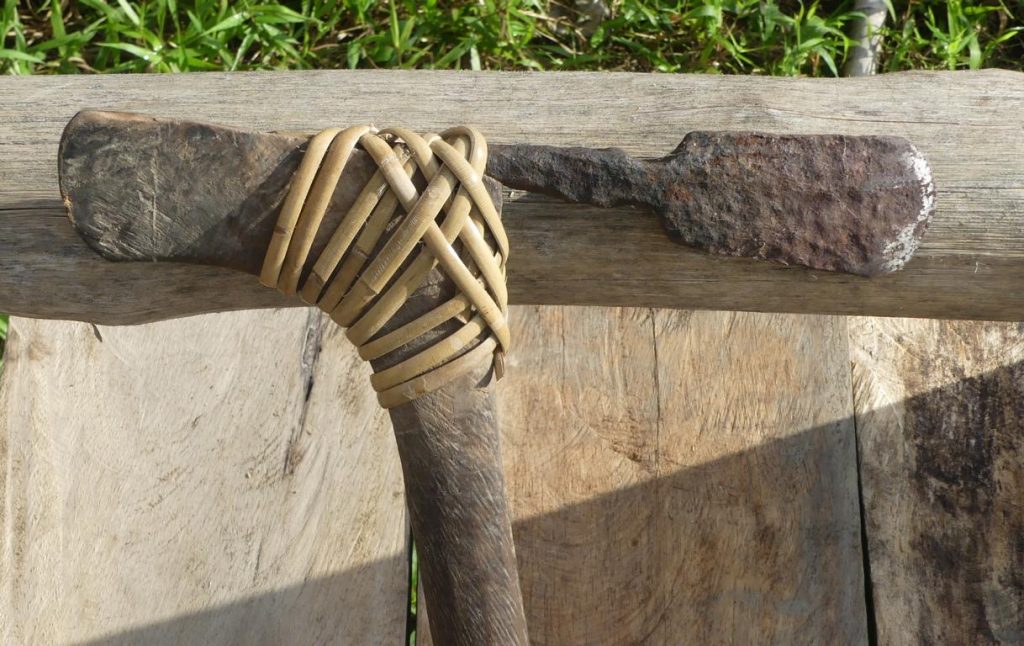
The handle of this ancient adze and axe was also made from sugar palm (Arenga pinnata) wood, and was slightly curved and smoothly carved. Aman Naru greatly preferred this old adze.
In general, adzes are used by the people for chopping tasks, such as cutting small trees, liana stems, and sago palm trunks, as well as for constructing canoes and shelters. There are additional examples of their use in traditional adzing work, like chopping and carving flat bowls or trowels. However, the adze is primarily used for cutting tasks that are too demanding for a machete but too light for an axe.
Machetes
In Bahasa (Indonesia and Malaysia), the word for machetes is Parang, which the Mentawai call Tegge. They use three types of Tegge, with a fourth used for agricultural work in villages.
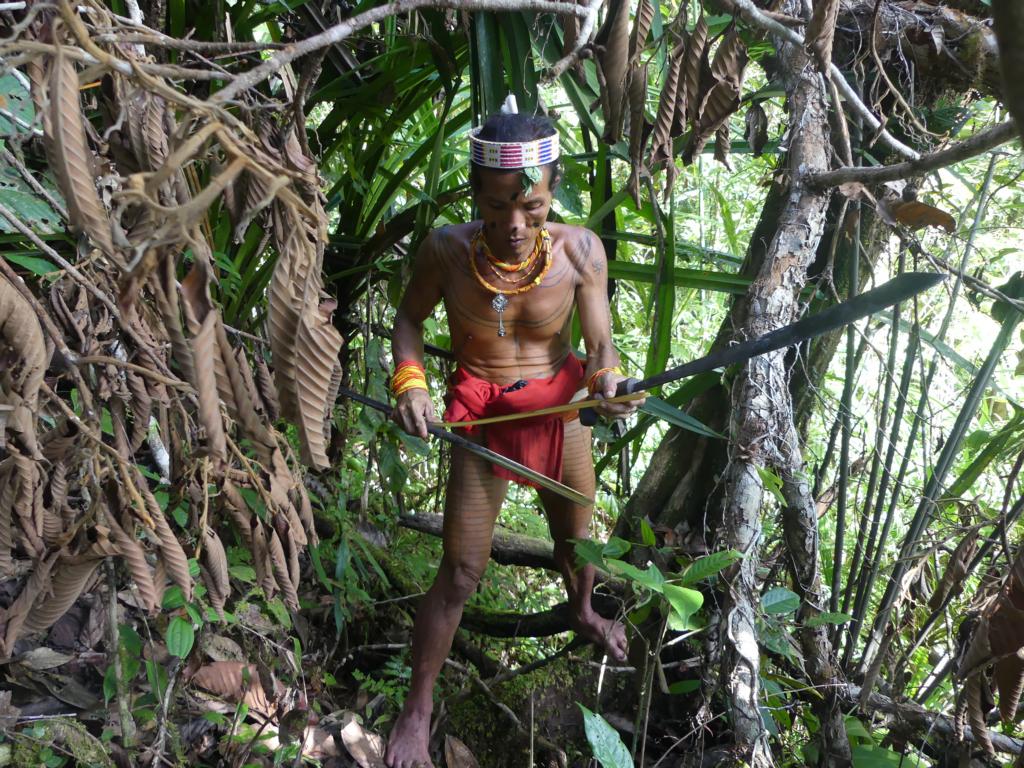
Lugguk

This machete type is the most important one for men. It is called Lugguk and has a pointed tip. It is used for all daily activities. Their blade is typically between 54 and 61 cm (21 and 24’’) long, and is 4 mm (5/32’’) thick, tapering down to 3 mm (1/8’’) at the tip. Only the blades are bought from dealers. The handle is usually crafted from Durian wood by men themselves.
Latjau

This is a man’s machete with a rounded tip. It is typically used for climbing coconut trees and for daily activities.
Kateileat

This machete type is used only by women. The blade is short and blunt, with a small tip. The blades are approximately 36 cm (14 in) long and 3 mm (1/8 in) thick. It is primarily used in the kitchen and for gardening.
The local name for this machete type is Kateileat. This specific machete was bought from a dealer in Padang. It had a soft rubber grip molded to the blade’s tang. As such, this machete type is suitable only for lighter tasks, as batoning could fracture the tang from the handle.
Agricultural machetes
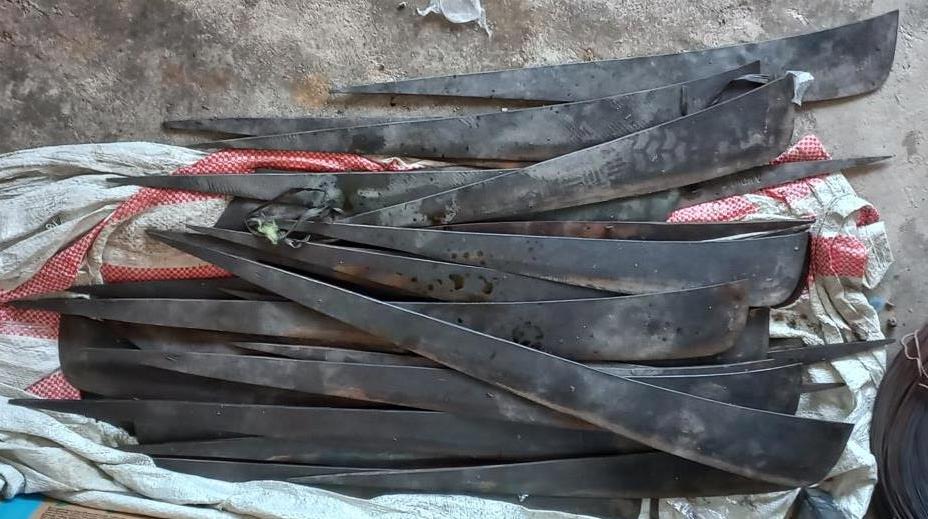
As shown in the picture above, these blades will easily cut through banana trunks and similar soft vegetation. The pointed tip on the backside is ideal for weeding and removing vines, but not for the versatile applications that remote living people need.
Specialized cutting tools
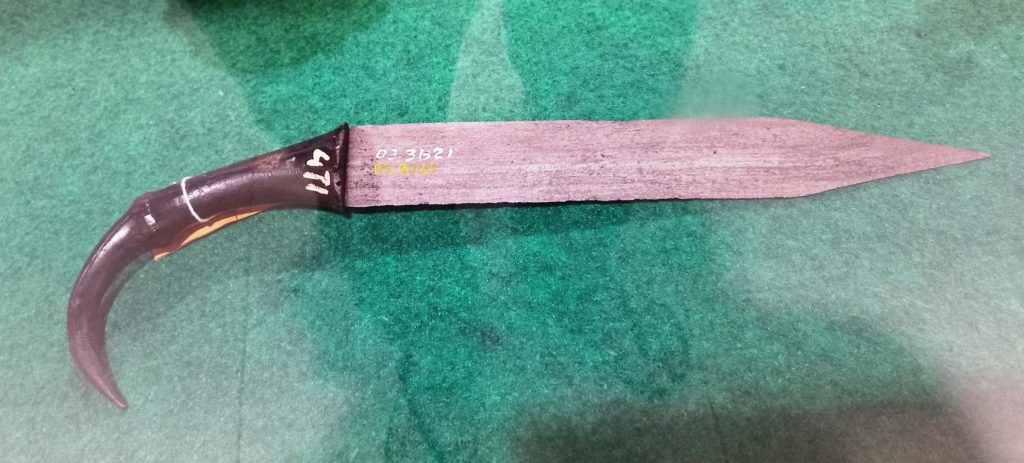
Among the Mentawai, only one specialized cutting-tool type remains. It is the so-called Pallitai.
The blade length of a Pallitai is between 30 and 70 cm (1 and 2 ft 3’’), and the handle is always crooked or decorated. The blade features parallel double edges, a central ridge, and a pointed tip. Additionally, the sheath exhibits a typical parallel design and a pointed tip. Pallitai were, in former times, a sign of high social status and were worn on the right-hand side. Until the end of the 19th century, when the Mentawai were still headhunters, Pallitai knives were used for stabbing their victims. Nowadays, they are only used to kill pigs by stabbing their necks.
In earlier periods, some people also carried Malayan Beladau daggers, which are no longer in use today. These Beladau daggers had a round, knobbed handle and a curved, double-edged blade with a prominent spine. The colloquial Malayan name for these daggers was Kuku Rimau, meaning ‘Tiger’s claw’.
Lessons learned about local cutting tools:
- Machetes are the preferred universal cutting tools for various tasks in the garden and forest.
- People use axes, adzes, machetes, and a specialized knife for cutting and chopping.
- Axes are primarily used for felling sago palms.
- Adzes have a variety of purposes for cutting and carving.
.



